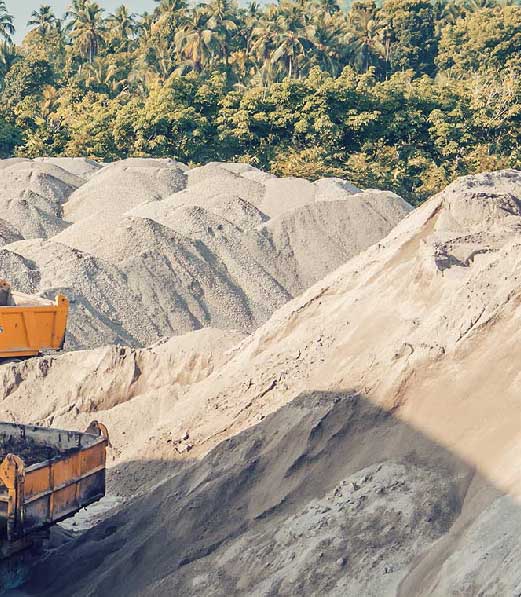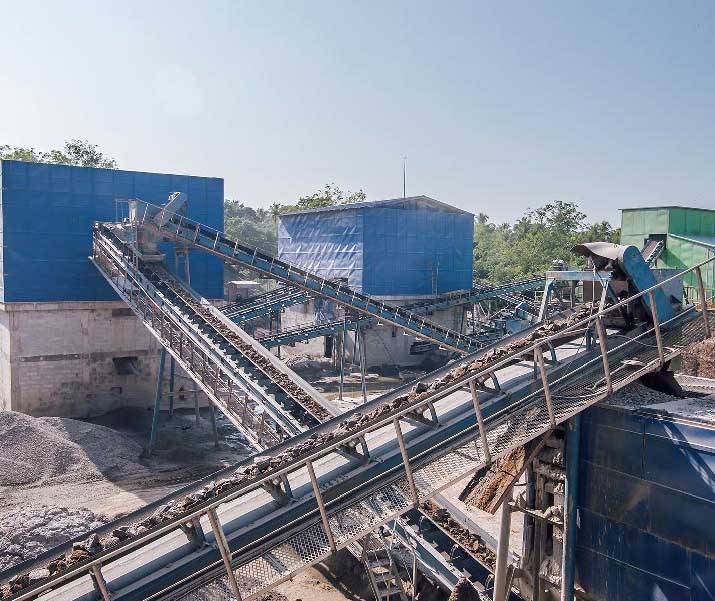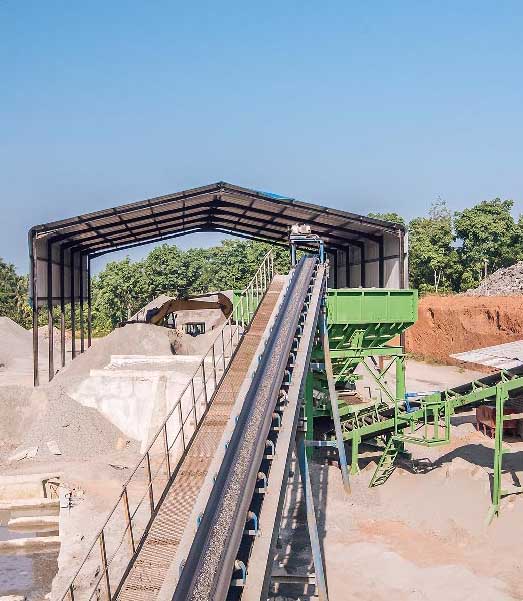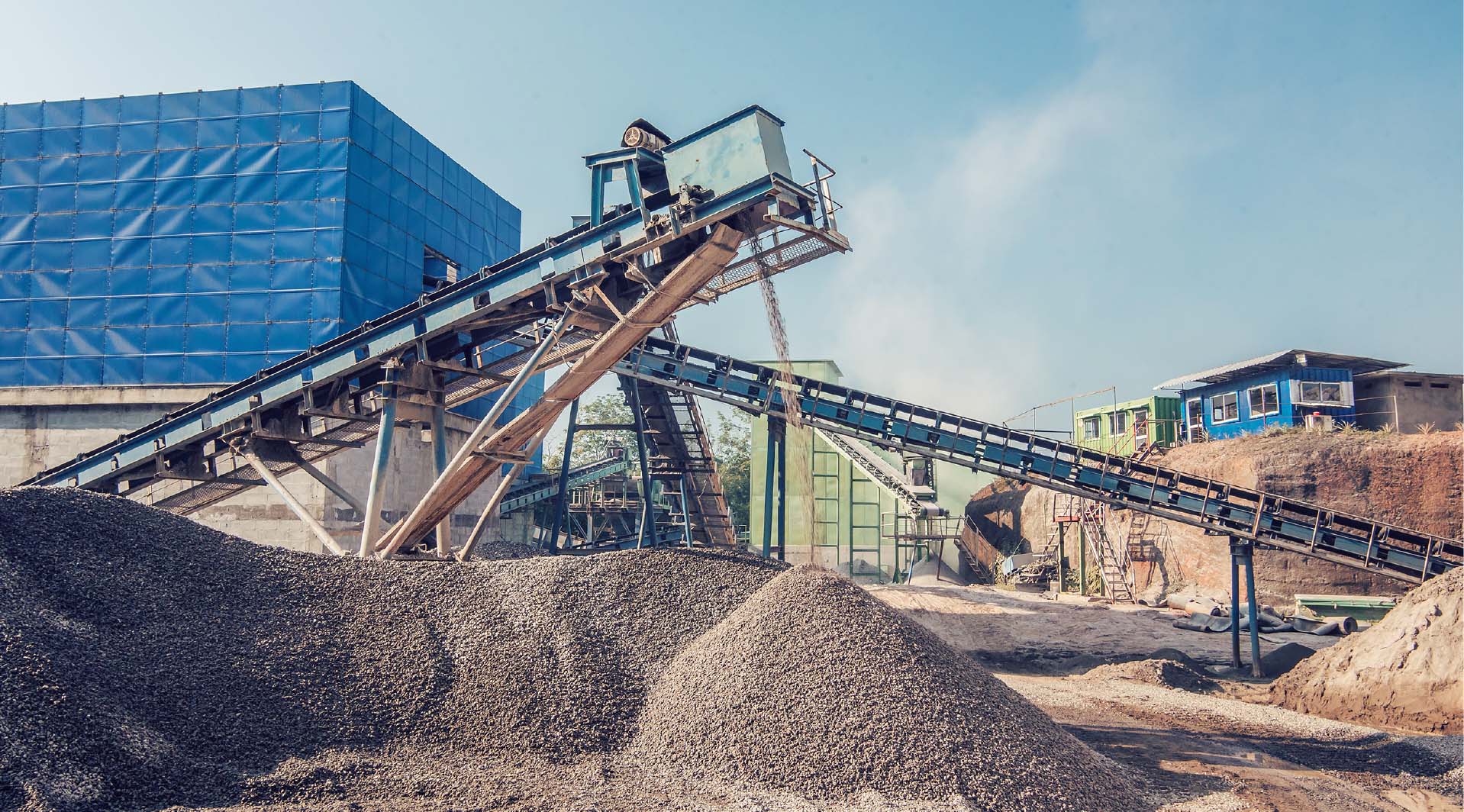What is Aggregate
Aggregates include such granular materials as sand, gravel, and crushed stone. When mixed and allowed to cure, they form a hard, durable material that is an indispensable part of the construction industry.
Tokyo Super Aggregate (Pvt) Ltd. is a fully owned subsidiary of Tokyo Cement Group. The company supplies the total aggregate requirement of TOKYO SUPERMIX Ready Mix Concrete supply network. Situated in Dompe, the aggregate plant produces Manufactured Sand, under the brand name of TOKYO SUPERSAND. In addition, it also supplies ¾ chips and metal, all made using top quality granite, that goes in to producing top-grade concrete.


What is Manufactured Sand ?
Sand is a primary ingredient in construction, used in every stage of the building process from foundation to finishing. The construction industry on average consumes nearly 2 million m3 of sand annually for concrete alone. We source sand predominantly from river beds across the country and the ever-increasing demand for sand has given rise to the practice of unlawful and unregulated sand mining. The enormous environmental impact of river sand mining, is one of the key drivers behind the construction industry’s adoption of Manufactured Sand or M-sand, as a practical alternative.
How is M-Sand
Produced ?
M-sand is manufactured by crushing specific types of granite, to achieve the required characteristics for concrete manufacturing. Crushed Sand is sent through a 3rd level of value addition that involves further crushing and washing to produce Manufactured Sand. Since it’s made using a mechanical process, M-sand can be manufactured to meet the required specifications for a given concrete mix design.

Why Manufactured Sand ?
Unlike river sand or sea sand, M-sand does not have any impurities such as clay, shell and lime stone particles or other organic and chemical compounds that has an impact on the strength and quality of the concrete. M-sand made by crushing high quality granite helps improve the durability and the strength of the concrete, by withstanding corrosion and chemical attacks.
The technical process of manufacturing M-sand gives the sand particles a rough cubical shape with rounded off edges, allowing it to create stronger bonds between the cement and the coarse aggregate. This same technology allows the manufactured sand grains to be graded, so that a specific size distribution can be maintained. The right proportioning of fine and coarse sand particles creates a denser concrete mix that requires lesser cement to deliver the same strength, in comparison to a concrete made using river sand. This makes a very strong economical case in favour of M-sand in the construction industry.
Comparison of Physical Characteristics
| Character | River Sand | Crushed Sand | M-Sand |
|---|---|---|---|
| Grading | Well Graded | Gap Graded | Well Graded |
| Micro Fines (<75nm) | Low | High | Moderate |
| Packing Ability | Good | Better | Better |
| Particle Shape | Spherical | Angular | Cubical |
| Surface Texture | Smooth | Rough | Rough |
| Presence of Clay & Silt | High | Moderate | Low |
| Composition | Quartzite | Granite | Granite |
What are the driving factors for M-sand ?
As explained earlier, in comparison to River Sand and Crushed Sand, M-sand requires a lesser volume of cement to deliver the same strength in concrete due to its better packing ability. This, along with the presence of higher micro fines, help minimise bleeding in the concrete, which is a major influence on durability. The low levels of impurities also contribute to the durability of the concrete. All of the above characteristics and the rough surface area and cubical shape of M-sand also lens to the higher strength of the concrete.
There are a very few negative parameters that work against M-sand such as, higher demand for water, poor workability due to the rough cubicle shape of particles, and the higher need for superplasticizers to help with the setting time. To overcome these negative factors a suitable admixture can be used to help in both workability and improve the compressive strength.
| Driving Factor | Characteristic of M-Sand |
| Low Cement Demand |
|
| Low bleeding |
|
| Higher durability |
|
| Higher strength development |
|

TOKYO SUPERSAND is manufactured under stringent quality standards to assure the quality of TOKYO SUPERMIX Ready Mix Concrete we supply to our customers. Due to this unmatched vertical integration capability, we are able to standardize and control the composition of particle sizes of the Manufactured Sand and coarse aggregates that goes in to producing TOKYO SUPERMIX, thus allowing us to optimize the mix designs and deliver a wide range concrete solution to meet specific customer requirements.
TOKYO SUPERSAND allows us to guarantee that sea sand is not used in any of our TOKYO SUPERMIX Ready Mix Concrete solution mixes, as it can compromise the quality and strength of the concrete.

